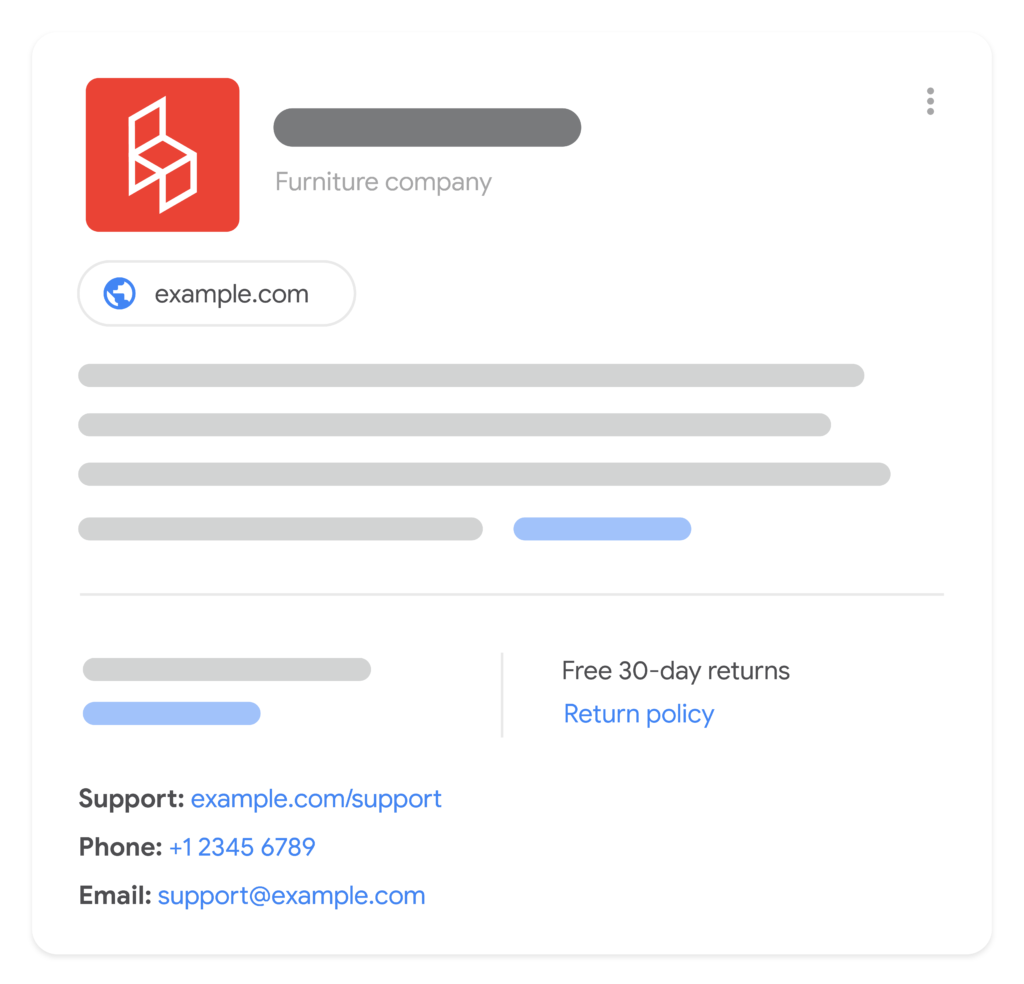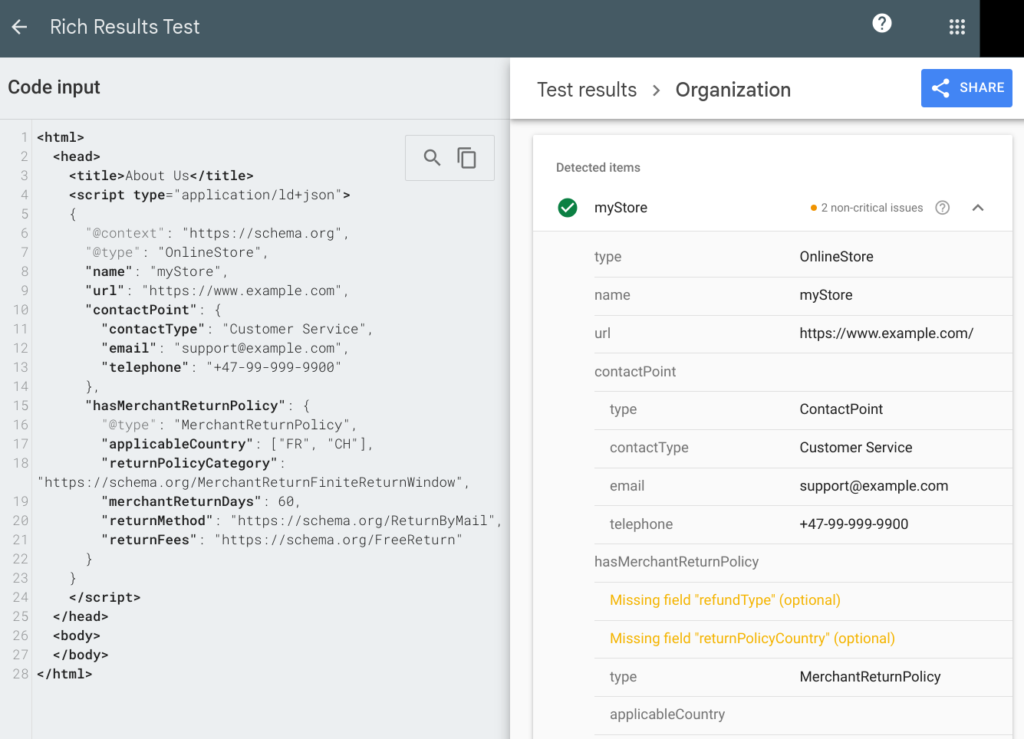Google understands that hassle-free returns are essential for customer satisfaction. That’s why they introduced organization-level return policy structured data. So, let’s talk sugar-coated returns!
For eCommerce and retail businesses, delighting customers is the ultimate goal, and a clear, accessible return policy is a sweet way to achieve this. This innovative feature simplifies the return process for both you and your customers while boosting your online visibility.
What is Structured Data?
Ever wondered how search engines truly understand your website? You guessed it, structure data. Basically, it is the language of search engines. This standardized code format provides search engines with clear, organized information about your website’s content.
By incorporating structured data, you sweeten up your website’s SEO, making it more accessible to search algorithms. Overall, this can improve your website’s visibility, increase click-through rates, and unlock rich search features like featured snippets.
Unwrap Organization-Level Return Policy Structured Data
Before getting into the nitty-gritty, let’s clarify what return policy structured data is. Essentially, it is a specific type of schema markup that provides clear information about your return policy to search engines. It’s like giving Google a detailed map of your return process.
Wouldn’t it be nice to have one delicious and all-encompassing return policy for your entire online store? Organization-level return policy markup makes that possible. By using it, you create a single, delightful return policy that covers your entire store.

If your site is an online or local business, we recommend using one of the OnlineStore or LocalBusiness subtypes of Organization for your structured data. This will help search engines better understand your business type and potentially improve your search rankings.
Benefits for Your Business
Implementing organization-level return policy structured data offers a range of benefits that can significantly impact your eCommerce business.
- Simplified Sweetness: Streamline your operations by managing a single return policy instead of multiple product-specific policies. Enjoy the added benefit of reducing the size of your product structured data markup and simplifying management.
- Enhanced Search Visibility: Increase your chances of appearing in search results, rich snippets, and knowledge panels by providing clear and accessible return information.
- Customer Delight: Who doesn’t love satisfied customers? Build trust and loyalty by offering a transparent and customer-friendly return process.
- Potential Sales Boost: A clear return policy can encourage more purchases and reduce shopping cart abandonment.
- Merchant Center Integration: For businesses using Google Merchant Center, defining the return policy directly within the platform ensures seamless integration with product listings. Even without a Merchant Center account, you can still leverage organization-level return policy structured data to provide essential return information.
Which Return Policy is Right for You?
So, which is tastier, product-level or organization-level return policies? While product-level return policies offer granular control, organization-level policies provide several advantages:
- Efficiency: Saves time and resources by managing a single policy.
- Consistency: Ensures uniform return information across all products.
- Improved Search Visibility: Increases the likelihood of appearing in rich snippets.
However, for products with specific return conditions (e.g., electronics with warranties), product-level policies might still be necessary.
Implementing Organization-Level Return Policy Structred Data
Ready to sprinkle some return policy magic on your website? To successfully implement organization-level return policy markup, follow these steps:
- Review Your Return Policy: Ensure your current return policy is clear, concise, and aligns with your business goals.
- Choose a Markup Flavor: Select a structured data format like JSON-LD for your markup.
- Create Your Markup: Use a structured data generator or manually code the markup to define your return policy.
- Sprinkle on Your Website: Integrate the markup into your website’s HTML code, preferably in the head section.
- Taste Test Your Markup: Utilize Google’s Rich Results Test tool to verify the correctness of your markup.
- Monitor and Update: Regularly check your markup for errors and update it as needed.

Sugarcoat Your Return Policy with These Tips
Sweeten up your return policy markup with these tips and tricks! Avoiding common mistakes and following best practices will ensure your return policy is a hit.
- Clear and Concise Policy: Ensure your return policy is easy to understand and free from ambiguity.
- Accurate Information: Provide accurate and up-to-date details about your return process.
- Keep it Consistent: Maintain consistent formatting throughout your return policy. Plus, ensure your policy matches your website’s information.
- Testing and Validation: Regularly test your markup to identify and fix errors.
- Stay Sweet: Write your return policy in user-friendly language, clear and simple language is best.
- Compliance with Regulations: Adhere to relevant consumer protection laws.
Return Policy Structured Data: A Recipe for Success
Implementing organization-level return policy markup is a strategic decision that can significantly benefit your eCommerce business. By streamlining operations, enhancing search visibility, and improving customer satisfaction, you can gain a competitive edge.
To unlock the full potential of return policy structured data and other SEO strategies, schedule a discovery call with cyberlicious® today. Let’s work together to sweeten your online success!

